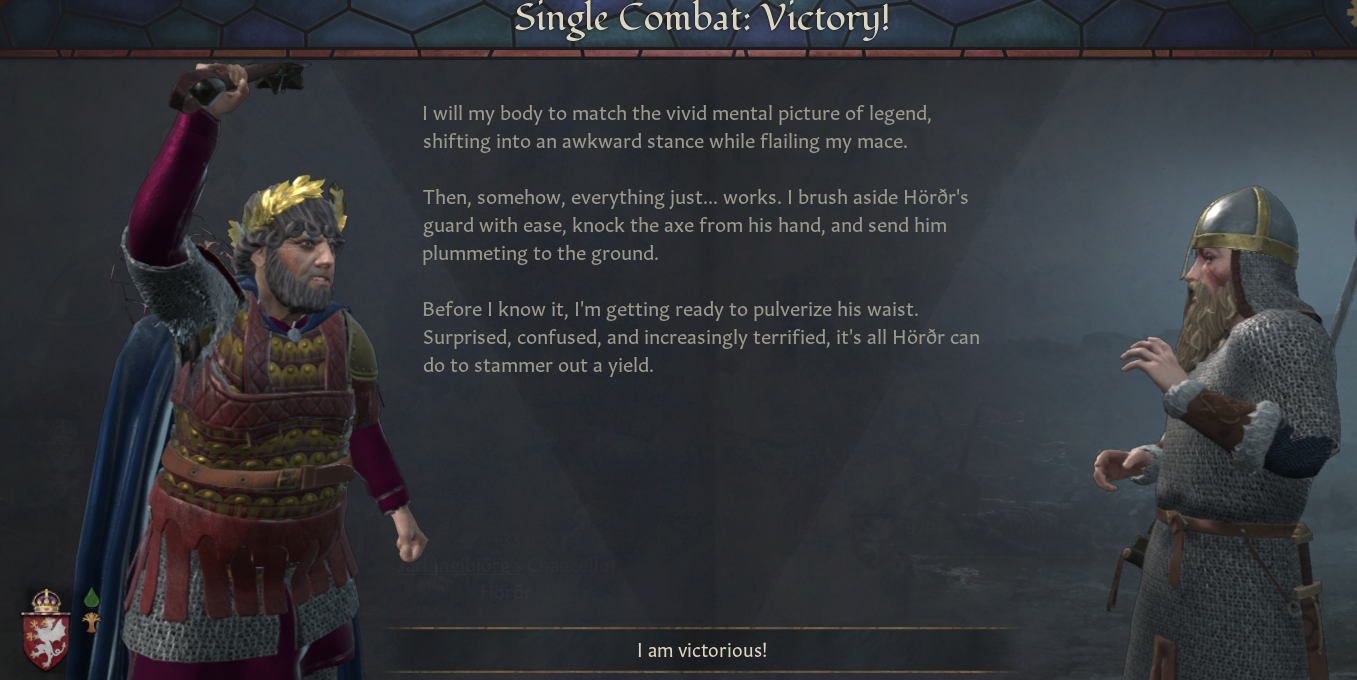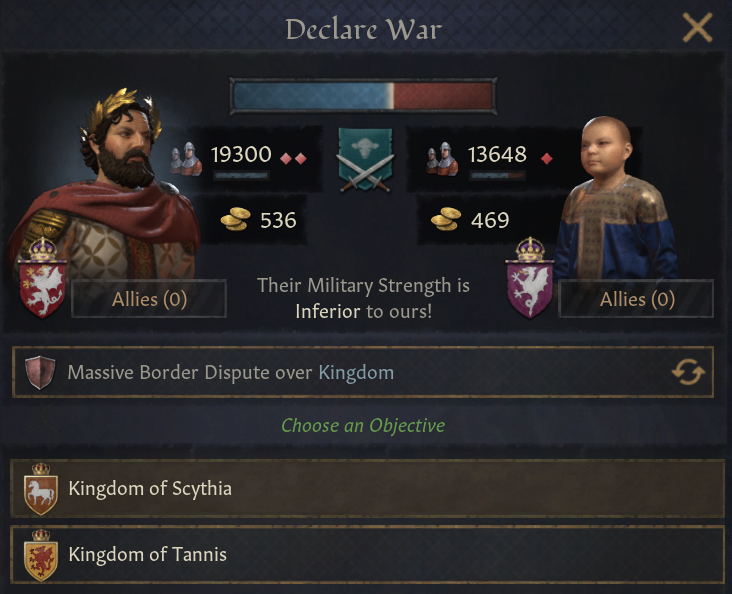An impressive reign, but now his son has to face the two remaining Tauricas, before they become too strong.
- 1





















































The seemingly annual Varangian invasions appear to be bad for the realm.a state weakened by constant wars and internal unrest.
Hyrcanos III was a terrible person, but a great ruler. But I guess that's usually how it works.
10 years of tyranny, Hyrcanos III deserved the death he got.
The seemingly annual Varangian invasions appear to be bad for the realm.
Lots and lots of Scandinavian adventurers. Do any have any claims or lands? Thanks























The discovery of Greenland sparked significant interest at the imperial court. Although it was a land far removed from the empire’s borders, its discovery could mark the beginning of new trade routes, or possibly new threats if the northern barbarians decided to use these lands to expand their power. Satyros IV and his advisors closely monitored the unfolding events, aware that northern influence might soon stretch into previously unknown territories.
Hopefully the Varangian invasions stop now that Piodmundr is your vassal.
Would this lead to the map expanding or is this off map?
In any case, the Empire is in a really good place now. Just have to get rid of Novgorod and we're on the way to Russia. Only the Empire is established much closer to civilisation, warm water ports, and generally a bit more secure and stable. Having all your major cities in the middle of European Russia or on the Baltic coast is not as good, in this period anyway.
Is the Empire primo? Og do you risk dividing up the titles if you exoand too far into new imperial areas of the map?
I feel like this is a good place for a world map given the hiatus.
Probably not, there are no map mods that expand the map to America. Depending on how colonization goes, I plan to create or not Viking countries in the Americas for the third part.
I never had the intention of creating Russia, expanding further north is rather pointless because the areas there are useless in my opinion. Depending on the Mongols how the issue of the steppe and Siberia will go.
